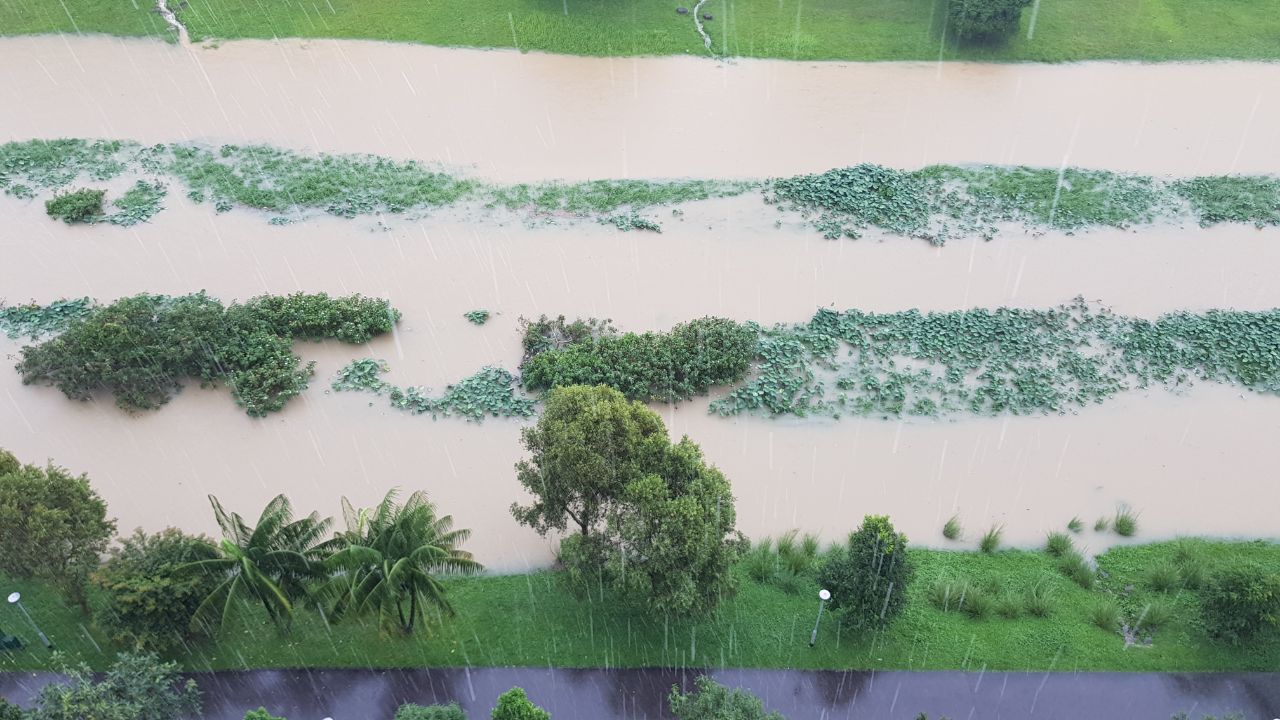The incessant downpour on the first day of 2021 resulted in some flash floods in Singapore.
Bishan-Ang Mo Kio Park was one of the places flooded, with muddy rainwater alarming some members of the public.
Here's how it looked on Jan. 1 afternoon:
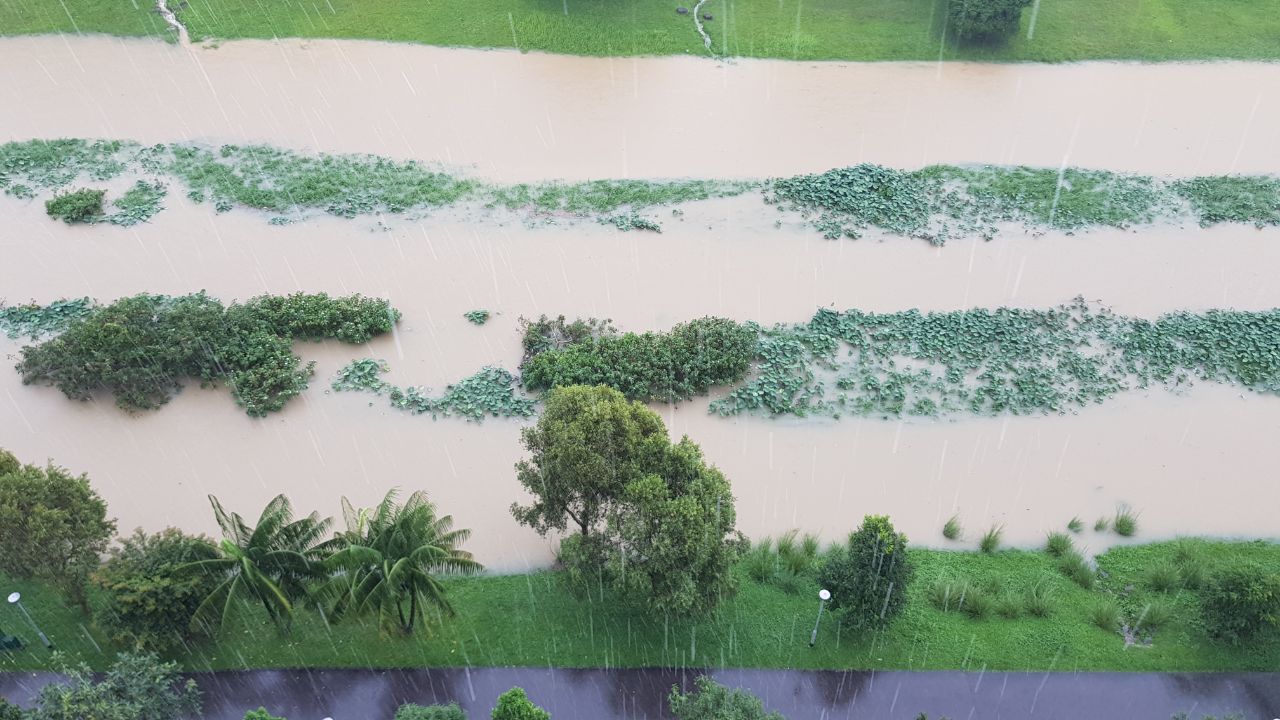 Photo courtesy of Pearlyn Pang.
Photo courtesy of Pearlyn Pang.
https://www.instagram.com/p/CJgHv80sh41/
The Straits Times also posted a video of flooding in the park:
However, unlike other areas, the flooding at Bishan-Ang Mo Kio Park is not much of a cause for concern.Transformation of Bishan-Ang Mo Kio Park
The naturalised river or streams and its adjacent areas that you see during dry days in the park were specifically intended to become floodplains during extreme wet days.
The 3.2km meandering naturalised river at Bishan-Ang Mo Kio Park used to be a 2.7km long straight concrete Kallang channel in the past, which would not otherwise have been able to contain as much rainwater as it now does.
This was what it looked like previously:
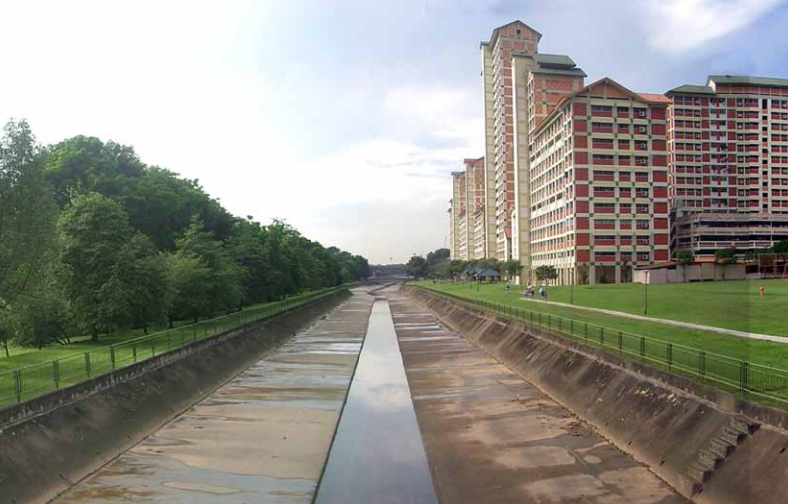 Picture from Ramboll Studio Dreiseitl
Picture from Ramboll Studio Dreiseitl
Here's what it looks like now:
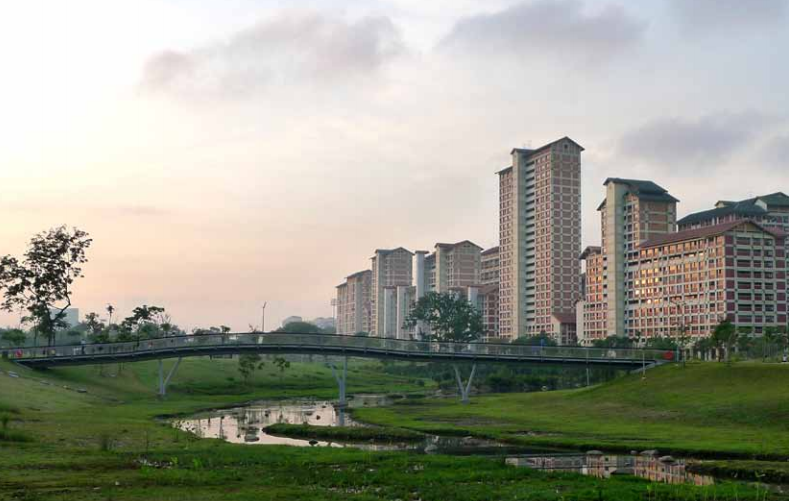 Picture from Ramboll Studio Dreiseitl
Picture from Ramboll Studio Dreiseitl
Designed to be flooded during extreme wet weather
This redevelopment of Bishan-Ang Mo Kio Park was part of the Active, Beautiful, Clean Waters (ABC Waters) Programme, a joint collaboration between PUB and NParks, which fulfilled two purposes, namely:
- to create more recreational spaces for us, as well as more importantly,
- to increase the capacity of the Kallang channel along the edge of the park.
The river channel was redesigned to resemble a floodplain that connects to a network of drains in town.
The usual volume of water will form only a narrow stream in the middle of the river while the adjacent area doubles up as a conveyance channel to dissipate large amounts of rainwater downstream in the event of a storm.
After the redevelopment, the naturalised river's carrying capacity increased by 40 per cent, with an increase in length from 2.7km to 3.2km, as well as an increase in width by almost five times.
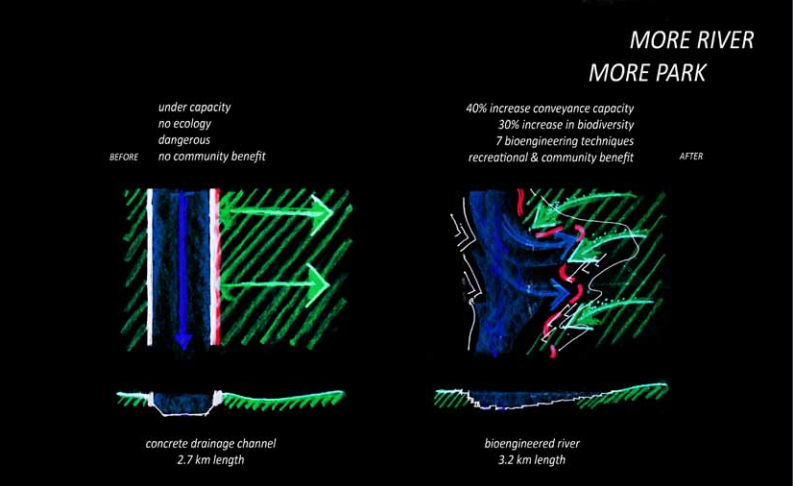 Picture from Ramboll Studio Dreiseitl
Picture from Ramboll Studio Dreiseitl
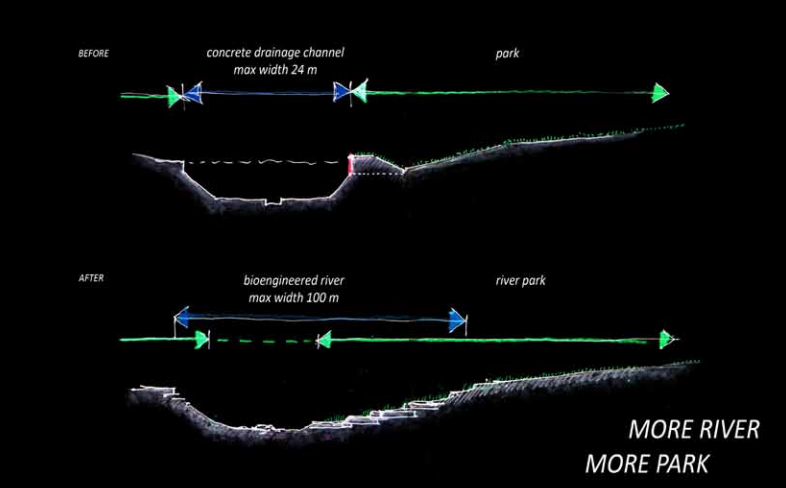 Picture from Ramboll Studio Dreiseitl
Picture from Ramboll Studio Dreiseitl
These bio-engineering techniques also created habitats for wildlife to return, contributing to a 30 per cent increase in biodiversity that we enjoy today.
This, of course, includes the Marina otter family we occasionally see, as well as many beautiful dragonflies, and more.
The new park was designed by a German landscape architectural firm Ramboll Studio Dreiseitl (previously known as Atelier Dreiseitl) in 2007, and was built between 2009 and 2012.
Here's a cool time-lapse video of the transformation of Bishan-Ang Mo Kio Park:
Totally unrelated but follow and listen to our podcast here
Top photo courtesy of Pearlyn Pang
If you like what you read, follow us on Facebook, Instagram, Twitter and Telegram to get the latest updates.
